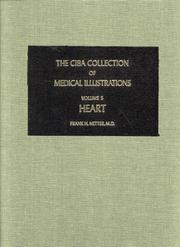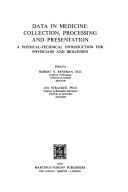| Listing 1 - 7 of 7 |
Sort by
|
Periodical
ISSN: 0140511X Publisher: London
Abstract | Keywords | Export | Availability | Bookmark
 Loading...
Loading...Choose an application
- Reference Manager
- EndNote
- RefWorks (Direct export to RefWorks)
Audiovisual Aids --- Medical Illustration --- Photography --- Teaching Materials --- Scientific illustration --- Medical illustration --- Illustration scientifique --- Illustration médicale --- Periodicals --- Periodicals. --- Périodiques --- Audiovisual Aids. --- Medical Illustration. --- Photography. --- Teaching Materials. --- Study and teaching --- Audio-visual aids --- Health Sciences --- General and Others --- Medical Education, Training & Research --- Human medicine

ISBN: 0914168061 9780914168065 Year: 1974 Volume: 4 Publisher: Summit CIBA pharmaceutical products
Abstract | Keywords | Export | Availability | Bookmark
 Loading...
Loading...Choose an application
- Reference Manager
- EndNote
- RefWorks (Direct export to RefWorks)
#GROL:MEDO-61<03> Ciba --- 600.5 --- 601.1 --- anatomie --- fysiologie --- metabolische ziekten --- stofwisseling --- Anatomy. --- Pathology. --- Medical Illustration. --- Illustration, Medical --- Illustrations, Medical --- Medical Illustrations --- Pathologies --- Disease --- pathology --- Art --- Anatomies --- schildklier --- chromosomen --- obesitas --- Pathological endocrinology --- diabetes mellitus --- Cushingsyndroom --- hypofyse --- Medical Illustration --- Endocrinology --- Tuberculosis, Endocrine --- Endocrine Glands --- Endocrine System Diseases --- Breast Diseases --- Diabetes Mellitus --- Adrenal Gland Diseases --- Thyroid Diseases --- Pituitary Diseases --- Endocrine Gland Neoplasms --- Parathyroid Diseases --- Anatomy --- Endocrine glands. --- Gastro-enterology. --- Medical atlases, portraits, iconography. --- Medical illustration. --- Metabolic diseases. --- Pathophysiology. --- Macroscopic, incl. comparative. --- Pathology

ISBN: 091416807X 9780914168072 Year: 1974 Volume: 5 Publisher: Basel CIBA-Geigy
Abstract | Keywords | Export | Availability | Bookmark
 Loading...
Loading...Choose an application
- Reference Manager
- EndNote
- RefWorks (Direct export to RefWorks)

ISBN: 0914168096 9780914168096 Year: 1980 Volume: v. 7 Publisher: Summit CIBA
Abstract | Keywords | Export | Availability | Bookmark
 Loading...
Loading...Choose an application
- Reference Manager
- EndNote
- RefWorks (Direct export to RefWorks)
#GROL:MEDO-61<03> Ciba --- Anatomy. --- Pathology. --- Medical Illustration. --- Illustration, Medical --- Illustrations, Medical --- Medical Illustrations --- Pathologies --- Disease --- pathology --- 600.5 --- 601.1 --- ademhalingsstelsel --- anatomie --- fysiologie --- pneumologie --- Art --- Anatomies --- Pathology of the respiratory system --- therapie --- mediastinoscopie --- kwaadaardige gezwellen --- lobectomie --- pneumectomie --- kunstmatige beademing --- zuurstoftherapie --- aangeboren afwijkingen --- Respiratory organs --- Respiratory System --- Atlases --- atlases --- Larynx --- Lung --- Nose --- Paranasal Sinuses --- Medical Illustration --- Trachea --- Pleura --- atlases. --- Anatomy --- Pathology --- 599.7 --- ademhalingsstelsel (luchtwegen) --- astma --- bronchiëctasie --- bronchoscopie --- bronchuscarcinoom --- cara --- cor pulmonale --- kunstmatige beademing (kunstmatige ademhaling) --- kwaadaardige gezwellen (kanker, sarcoom) --- longcarcinoom --- longemfyseem --- longtuberculose --- mucoviscidose (cystic fibrosis, kystische fibrose, pancreasfibrose) --- pneumologie (ademhalingsziekten, longziekten, luchtwegenziekten) --- stoflong (pneumoconiose) --- tracheaintubatie --- tracheotomie --- (zie ook: endocrinologie, gynecologie, hematologie)

ISBN: 0914168010 Year: 1972 Volume: v. 1 Publisher: Summit, N.J. : Ciba Pharmaceutical Co.,
Abstract | Keywords | Export | Availability | Bookmark
 Loading...
Loading...Choose an application
- Reference Manager
- EndNote
- RefWorks (Direct export to RefWorks)
Hypothalamus --- Nervous System --- Nervous system --- Spine --- Brain --- Cerveau --- pathology --- atlases --- physiology --- Atlases --- Maps --- Cartes --- zenuwstelsel: atlassen --- zenuwstelsel --- Neuropathology --- anatomie --- neurologie --- spina bifida --- hypothalamus --- hydrocefalie --- Anatomy --- Internal medicine --- Medical atlases, portraits, iconography. --- Pathological anatomy. --- Macroscopic, incl. comparative. --- Endocrinology. --- Neurology. --- Medical illustration. --- atlases. --- Atlases.

ISBN: 9024721504 Year: 1980 Publisher: The Hague Nijhoff
Abstract | Keywords | Export | Availability | Bookmark
 Loading...
Loading...Choose an application
- Reference Manager
- EndNote
- RefWorks (Direct export to RefWorks)
Imaging systems in medicine --- Medical illustration --- Medical instruments and apparatus --- Medicine --- Health Workforce --- Apparatus, Medical --- Instruments, Medical --- Medical apparatus --- Medical devices --- Medical products --- Biomedical engineering --- Medical supplies --- Scientific apparatus and instruments --- Illustration, Medical --- Medicine and art --- Scientific illustration --- Medical imaging systems --- Data processing --- Apparatus --- Equipment and supplies --- Instruments --- Measuring methods in physics --- Biomathematics. Biometry. Biostatistics --- Human medicine

ISBN: 9780387945811 0387945814 Year: 1996 Publisher: New York : Springer,
Abstract | Keywords | Export | Availability | Bookmark
 Loading...
Loading...Choose an application
- Reference Manager
- EndNote
- RefWorks (Direct export to RefWorks)
Every graduate student, postdoc and scientist knows that images and illustrations can make or break their lecture, poster presentation, and journal or book article. Graphics software and laser printers have placed professional-quality graphics within the reach of everyone. But in the end, whether your audience sees clear, understandable images or a 300 dpi mess depends on whether you've followed the principles presented by Mary Helen Briscoe in this book. Learn the strengths and weaknesses of different forms of visual presentations. Understand when to use a figure, and how much information can be represented in one. See examples of bad, good, and better graphs and tables. Focus on your audience, to learn that a figure prepared for an article may not be ideal for a slide or an overhead. The author also presents information on presenting DNA sequences, protein structures, and other molecular graphics.
Scientific illustration --- #WPLT:syst --- 001.816 --- 655.28.022 --- wetenschappelijke afbeeldingen --- Illustration, Scientific --- Science illustration --- Scientific literature --- Art and science --- Illustration of books --- Drawing --- Technical illustration --- 001.816 Voorbereiding van wetenschappelijke publicaties. Kopijvoorbereiding. Correcti --- Voorbereiding van wetenschappelijke publicaties. Kopijvoorbereiding. Correcti --- Arbeidsfasen bij drukvoorbereiding. Pre-press. Kopijvoorbereiding. Copy-editing --- Illustration --- Scientific applications --- Scientific illustration. --- Teaching --- Visual communication in science. --- Science --- Illustration scientifique --- Matériel didactique --- Communication visuelle en sciences --- Sciences --- Aids and devices. --- Methodology. --- Méthodologie --- Medical Illustration.
| Listing 1 - 7 of 7 |
Sort by
|

 Search
Search Feedback
Feedback About
About Help
Help News
News